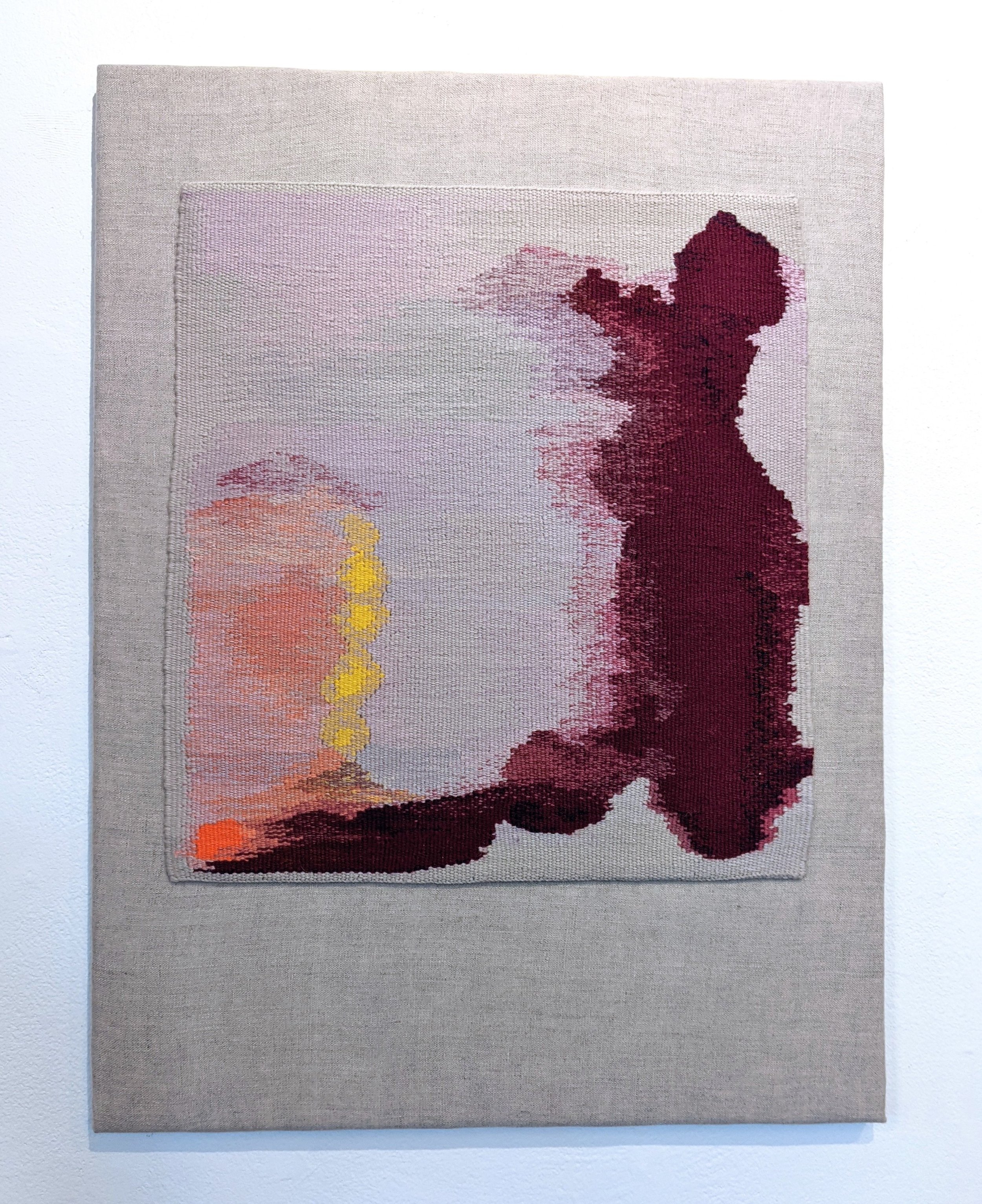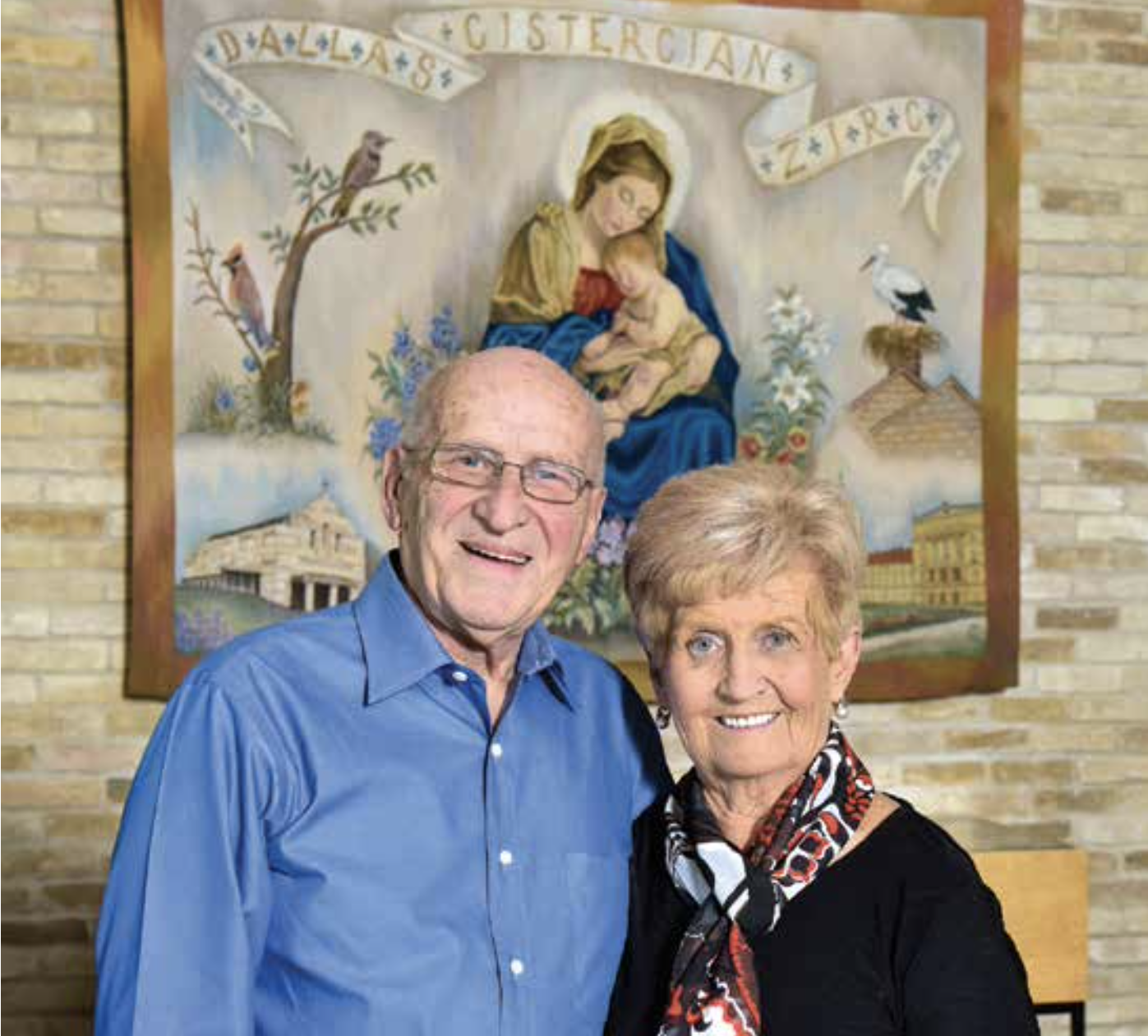I use several techniques in my fiber arts practice. You’ve mostly seen me weaving cloth—blankets. These aren’t the most labor, time and resources intensive of my weaving. That would be my tapestry work. I learned to weave cloth because weaving and textiles were around all the time as a child. But that’s not why I weave tapestry. I began to weave tapestry because of Executive Order 13769. Because of Donald Trump.
My great uncle fled Zirc following the Hungarian Revolution of 1956. In 2014, he commissioned a tapestry of the Virgin Mary from a family of weavers in his home village to honor the Cistercian monks who educated him as a boy and sponsored he and several of his classmates when they arrived alone in the United States. He had kept my family updated on the tapestry’s progress and shared photos and yarn samples throughout the making. He had grown up with the matriarch in this family; it took them a year to complete. Zirc, he explained, was known for its tapestries. My uncle has always been a devoted Catholic. I appreciated the gratitude and piety expressed in the commission. I can’t say the aesthetics resonated with me. At that point, I had seen very little tapestry I liked. (Unsentimentally, I did wonder if a boys prep school wouldn’t have preferred a donation of something a little more practical. A new gym or some computers, maybe?)
The tapestry crossed my mind now and then, but it did not move me until the evening of January 28th, when the signing of Executive Order 13769 resulted in chaos at airports around the country. The immediate suspension of the US Refugee Admissions Program was announced and reports of detained travelers began to filter onto CNN and the AP wire. Night fell; protests built. I was in bed with a feverish. vomiting child. I texted friends in Chicago and New York. Those who could help translate and provide legal counsel headed to airports. Those who couldn’t sent cab fare and babysitting cash to those who could—small acts to keep us from feeling completely powerless.
After those steps were taken, I compulsively hit refresh on CNN and sat with my hand on a small, sweaty brow. Eventually, I turned the phone off and sat with the sound of my kid’s breath and the radiator and the house responding to the wind. I flashed on Frank’s commission, the shades of blue in the Mary’s robe. A small and very clear sentence formed inside me. “I have to learn how to weave tapestry.” It seemed absolutely ridiculous. I tried some mild forms of objection. I don’t have time for a new technique. I don’t even like tapestry. But very clearly, there it was. And it stayed and would not budge or let anything else in until I cued up some videos of Archie Brennan at work. I’ve only had this clear voice speak up a dozen or so times and I never know what to do with it. There is no use arguing or asking for more details. I still think it’s kind of ridiculous.
Tapestry, unlike other kinds of cloth, is a purely an object of art. One could argue that its function was a kind of medieval home insulation, but that’s stretching it. Any cloth tacked up could meet that task. Tapestry is cloth that is about composition, visual impact, splendor. It is not adorned cloth, embellished with stitching or embroidery. It is a picture built, thread by thread. The skills to make it are fiddly, requiring intense focus and inch-by-inch problem-solving. It takes so dang long. Today, I spent half a day weaving and completed one and one half inches.
To be able to weave tapestry means that you are lucky. It means you are alive. It means the kin before you survived and the skills survived and you, yourself, have survived well enough to go to school, study art, birth another generation, move back to the region previous generations migrated from when the quarrying jobs dried up. You have the luxury of participating in this artform that has no functional utility at all. I began to weave tapestry with no clear idea of what kind of tapestries I would weave or even why I was spending time on it. (It’s not like I’ve got extra minutes to burn or need more hobbies.) The little interior voice didn’t have anything else to say but I’ve come to understand its directive as get to work, you will find a way to love this. There’s that theme of the unknown, unknowable future again. You don’t get to know if its going to work out or even why you’re here, but look around, pay attention, stay alive, try to get it right. You will find a way to love this.
Frank and Judy Tibenszky in front of the tapestry they commissioned for Cistercian Prepatory School, commemorating the relationship between the Cistercian order in Zirc, Hungary and the Cistercian order established in Dallas, Texas. As a boy, Frank’s village pooled resources to send him to the Catholic school run by the monks in Zirc. The Dallas order welcomed the Zirc monks when they fled in 1950 and the Cistercians financially supported Frank and several classmates following their escape from Hungary. Photo by Jim Reich.


